
Introducing Predestination
Brendan Drain, lead developer of Brain and Nerd, the indie studio behind Predestination, introduces us to his sci-fi 4X title and explains what will make it special.
How would you describe Predestination to the video game community?
Brendan Drain: Predestination is a turn-based sci-fi 4X game for the PC. We're trying to bring back all the features we loved from classics like Master of Orion II, but also to improve on them. Players will explore planets sector-by-sector to find resources, design cities to capitalise on those resources, research advanced technologies, and battle enemy races with custom designed ships. The game's big features include a 3D galaxy map that's easy to navigate, realistic planetary gameplay, an intuitive and moddable user interface, and truly tactical fleet combat.
What is its Unique Selling Point?
Brendan: Most 4X games focus on one or two areas of gameplay, neglecting deep colonisation or combat mechanics, but with Predestination we really want to deliver the whole package in a well-rounded strategy game. There will be enough depth to keep hardcore players entertained and some simple tools like our unique colony blueprint system to solve the micromanagement problems deep games inevitably encounter. Predestination will be an evolutionary step forward for the genre.
Predestination is a big, bold concept for a debut title; the 4X genre demands a lot of depth, and Predestination looks to be adding some pretty high production values on top. It's even braver considering your Kickstarter campaign claims “major publishers have been shying away from space 4X games since Master of Orion III flopped in 2003, and it's been left to smaller studios and independent developers to fill the gap ever since."
Do you think the time is right for a genre revival?
Brendan: Absolutely! Everyone on the Predestination team grew up playing 4X games like Master of Orion II and the Civilization series, and there are loads of other people out there with similar gaming roots. We've all been just waiting for a good sci-fi 4X game to come along, but none of the recent titles have delivered as complete and fun a game as the classics did. Very few major development studios or publishers have even touched the 4X genre in years, so we knew that the only way we would get the game we've all been dreaming of playing was to make it ourselves. Our success on Kickstarter proves that there's an audience out there, so I think the time really is right for a 4X revival.
NEXT: Predestination: Concepts and Influences
Predestination Exclusive Series Contents
- An Exclusive Interview with the Brains and Nerds Behind Indie 4X Game Predestination
- Introducing Predestination
- Predestination: Concepts and Influences
- Predestination: Paths to Victory
- Predestination: Combat Gameplay
- Predestination: Development and Release
- Predestination: Building the Brain and Nerd Brand
- Predestination Creator Brendan Drain on Developing His First Game
- Closing Thoughts and Useful Links
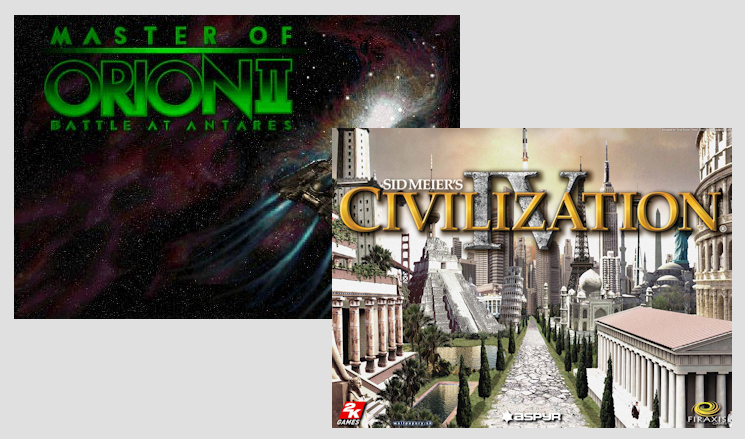
Predestination: Concepts and Influences
Having explained the basics behind Predestination, Brendan Drain takes us further into the complex world of galactic colonisation, exploration and domination, explaining how learning from the classics is as important as bringing something new.
4X games have a rich heritage spanning three decades, and there is a wealth of great gaming ideas ripe for reinvention. What influences are we likely to see in Predestination's gameplay?
Brendan: There's a very strong gameplay influence from Master of Orion II, which was in my opinion the most well-rounded and feature-complete sci-fi 4X game ever made. That influence is very apparent in our galaxy map, where we've retained things like the freeform ship movement and range mechanics, but have extended them to work well in 3D. The planetary exploration portion of the game takes a lot of its influence from Civilization IV and V, with resources spread across a vast map and the player having to decide where to place his cities to best take advantage of them.
I also take some influence from an old Amiga game I grew up with called K240 in which the player colonised asteroids and manually designed colonies out of modular buildings. The catch was that each asteroid only had a certain number of squares for buildings, so you had to manage that space effectively. You'll be able to design colonies in a similar manner in Predestination, balancing factors like industrial output and research with colony morale and population growth.
Predestination's innovative blueprint system sounds interesting as a way of avoiding repetition the early gameplay. Could you explain more how this would work?
Brendan: Sure, that's one of my favourite features! Every 4X game has this problem where the amount of micromanagement your empire requires spirals out of control in the late-game stages. Manually exploring and setting up a colony is fun at the start of the game when you only have one or two planets to manage, but isn't so fun when you have 30 planets and a war going on. Some games solve this problem by putting an AI in control of your empire, or by simplifying the planetary colonisation mechanics down to just a few choices; In both cases, you sacrifice a great deal of control over your empire for the sake of reducing micromanagement.
Rather than eliminating micromanagement, our approach is to provide tools to let you automate it without losing any control. The blueprint system lets you design a colony building layout from scratch or save the layout of an existing colony, and then re-use that template on a new colony. The new colony will then automatically build itself according to the template without you ever needing to tend to it. You could have a blueprint for a production colony, for example, or one for a farm colony that exports food.
To help reduce late-game micromanagement further, you'll also be able to go back and edit the blueprint and the changes will propagate to all colonies in your empire using that blueprint. So if you research a new factory building, you could add it to all production worlds just by editing the appropriate blueprint. I should also be able to include some basic rules in the colony design process, so players could tell the blueprint to skip certain buildings until specific conditions are met. For example, you might tell it only to build more housing when the population is nearing its limit. The blueprint system is something the 4X genre has been needing for a long time, and I think it's a real game-changer.
Predestination has an interesting backstory involving wibbly-wobbly timey-wimey stuff which plays out in the game with the appearance of temporal rifts. What came first, the story or the mechanic?
Brendan: The two kind of evolved in parallel. It always bothered me that 4X games inexplicably start with every race at the same level of technological advancement and with one empty colony. The Predestination story neatly explains these and other classic 4X tropes using time travel. In the story, ships from dozens of races were all sent back in time in a cataclysmic accident and scattered throughout the galaxy, with each ship founding a separate new colony. When we thought about other things like random events, pirates and commander NPCs appearing throughout the game, the time travel storyline just made everything click into place.
Some of the ships sent back in time will arrive at different times; those that arrived far in the past explain the ancient ruins littering the galaxy, while others appear throughout the game in periodic temporal rifts. Some of these rifts will deposit small craft containing commanders who will offer their services for a fee, others will reveal ships willing to join your cause, and some will spit out the salvageable remains of a ship that didn't survive the transition back in time.
NEXT: Predestination: Paths to Victory
Predestination Exclusive Series Contents
- An Exclusive Interview with the Brains and Nerds Behind Indie 4X Game Predestination
- Introducing Predestination
- Predestination: Concepts and Influences
- Predestination: Paths to Victory
- Predestination: Combat Gameplay
- Predestination: Development and Release
- Predestination: Building the Brain and Nerd Brand
- Predestination Creator Brendan Drain on Developing His First Game
- Closing Thoughts and Useful Links
Predestination: Paths to Victory
Developer Brendan Drain is joined by Brain and Nerd's Project Manager Tina Lauro to talk about their plans for Predestination's sandbox elements and providing players with a variety of ways they can achieve victory. The above video showcases the "route one" option, but will there be other paths to follow?
Ultimately, 4X games are all about racing up the technology tree and winning the arms race. According to your Kickstarter info, Predestination will have a system involving making discoveries and researching to make breakthroughs. Will this be the key to beating the game?
Tina: This will be one key element in terms of winning the game, without marginalising those that want to play a less explorative game. When we say we’re making a 4X game, we really do mean to do justice to all those play styles, whether your personal emphasis is on exploration, expansion, extortion or extermination. Research and discovery wins will fall under the exploration umbrella, and will definitely be one way of winning the game.
In your in-development videos, many actions take a number of “turns”. How long is a turn?
Brendan: We haven't actually decided what time interval would be sensible to attribute to one turn, but it will probably be a month or a year. The player can end his turn whenever he's ready and there's no time limit, so you can play the game at your own pace. If you want to spend 20 minutes per turn micro-managing everything to perfection, you can do that. But you can also use tools like the blueprint system to put parts of your empire on autopilot and burn through the turns until something important happens.
The ideas you have to develop the diplomacy gameplay sound interesting. Will it be possible to "Palpatine" your way to victory?
Tina: That’s an epic way to put it! I don’t know if all the diplomatic players will be quite so treacherous, but you most definitely can be victorious through diplomatic ways, yes! The spy system will tie in very nicely with our unique take on diplomacy; infiltration is a most excellent way to keep your intelligence up-to-date for the best possible leverage, and it allows you to strong-arm other races without them pointing their space guns in your direction.
Will there always be an end-game involving the “big bad guys” leading to final scenario victory conditions or would will there also be an endless sandbox mode?
Brendan: The primary game mode for a 4X game is always going to be a sandbox mode, and Predestination is no different. The various victory conditions can be enabled or disabled when you start a new sandbox game. They include diplomatic and exploration-based endings, and of course the default victory condition of conquering the galaxy by exterminating or absorbing the other races. You might be able to enable victory by defeating the Revenants, an ancient and destructive race that lies dormant and hidden in one of the map's solar systems until something or someone wakes them up.
We've also planned a story campaign that lets you play as Predestination's core races as they struggle to rebuild after being sent back in time. I can't reveal all the details of the storyline just yet, but it's safe to say you'll eventually tackle the Revenant homeworld itself.
NEXT: Predestination: Combat Gameplay
Predestination Exclusive Series Contents
- An Exclusive Interview with the Brains and Nerds Behind Indie 4X Game Predestination
- Introducing Predestination
- Predestination: Concepts and Influences
- Predestination: Paths to Victory
- Predestination: Combat Gameplay
- Predestination: Development and Release
- Predestination: Building the Brain and Nerd Brand
- Predestination Creator Brendan Drain on Developing His First Game
- Closing Thoughts and Useful Links
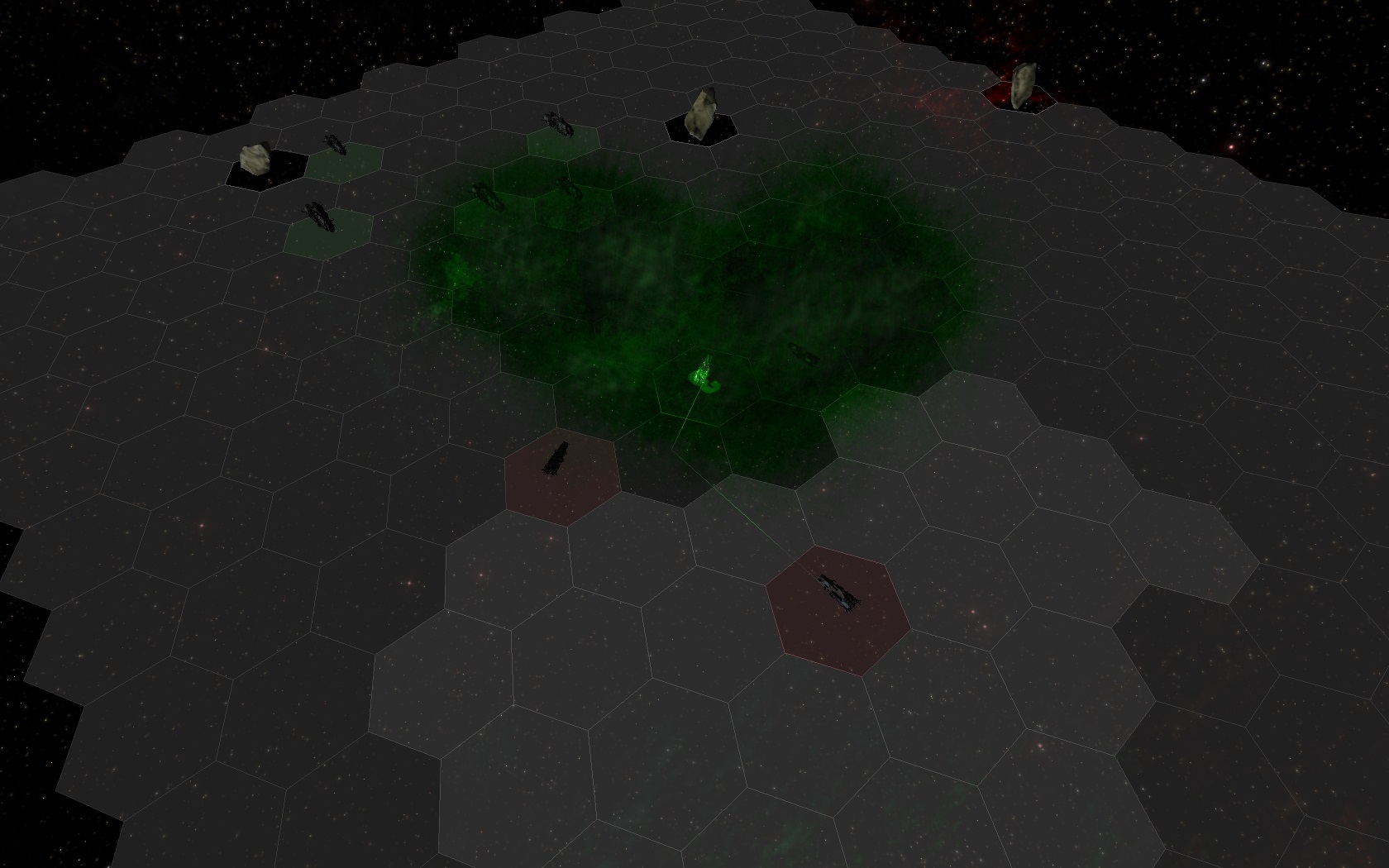
Predestination: Combat Gameplay
Brendan Drain and Tina Lauro discuss the combat aspects of their upcoming 4X title, Predestination.
Tell me about the spaceships. How will combat work?
Brendan: The recent trend in 4X games has been to use real-time ship combat with massive fleets, which looks great in screenshots but means you have to sacrifice strategic control. Some games have even taken the control element out of combat entirely and just use statistics to determine the outcome. With Predestination we're bringing back hardcore tactical combat, with turn-based fleet combat that lets you directly control every ship. Rather than fighting with hundreds of nameless disposable ships, you'll be leading small fleets of custom-designed ships with hand-selected captains into battle.
I like the idea of being able to micro-manage battles. What influence will these captains have in the combat?
Brendan: Ship captains are these legendary pilots and commanders who you can find stranded throughout the galaxy or who can appear in temporal rifts. They offer to work with your empire, and you can assign one of them to command any individual ship. They each have a set of bonuses that they give to the ship they're in charge of, and a smaller bonus that they give to the entire fleet. They'll range from fighter pilots who give bonuses to small ship speed and evasion to battleship captains with bonuses to weapon damage and bombing, or even engineers who boost shields and armour. The idea is that you can hire specific captains to synergise well with your own personal ship design style.
I can imagine there might be a significant number of battles in later stages of the game. Could your blueprint system be used for pre-set military tactics so players more interested in the empire-building side of Predestination can 'auto-resolve' battles without relinquishing total control?
Brendan: Tactical combat is one of the three core aspects of the game, and for us it's as important as the galaxy management and planetary colonisation gameplay. Most of our effort is going into making the ship combat as tactical and engaging as possible, but we understand that some people might not want to play the ship combat game. The plan is to include some basic auto-resolve features for the initial release, and then to see how players react to that and where the system can be expanded. It's our hope that most people will enjoy the tactical combat portion of the game.
The graphics engine looks to be fairly robust, with seamless transitions between space environments and colony management on the planet surface. Will there be support for first-person exploration of colonies, spacewalks, -cough- walking in stations? -cough- ;)
Brendan: I've been working on the game engine for Predestination since university and it can do a lot, but first-person gameplay is a little beyond its capabilities right now. It's really good at rendering procedurally generated galaxy backdrops, nebulae, asteroid fields, planets and space ships at the moment; all the things necessary for a 4X game.
What have you got against rectangles? You've been cutting the corners off them on your EVE Evolved column titles for years and now you're doing it on all Predestination material. Is it your trademark or has years of playing EVE given you an aversion to symmetry?
Brendan: Hexagons are futuristic! It's funny you should mention it actually, because early in Predestination's development we had everything done in rectangles rather than hexagons. We prototyped gameplay on this huge gridded gaming mat, testing out ideas like planet exploration and tactical fleet combat system. We ran into problems with ship firing arcs and movement on the square grid, and it just wasn't fun or intuitive.
One day when we went to test some changes to the combat system, someone had already drawn out this huge Dungeons and Dragons map on the mat and we didn't want to ruin it. So I flipped the mat over, and what was on the other side but a grid of hexagons! We gave the game a try on the hex grid and all of the sudden, everything started clicking into place. All of the complicated ship movement and firing charts we'd made were replaced with a few simple, intuitive rules.
Hexagons have solved so many of the challenging game design problems we faced that we decided to make them a theme for the game's UI. Besides, I think Tina would kill me if our UI looked even remotely like EVE Online!
Will there be multiplayer?
Tina: Multiplayer is where all the fun comes in! Playing the story campaigns should provide some quality playing hours, but the real replayability will come from our online and LAN multiplayer modes. Our fans are amazing, and they unlocked the $40,000 stretch goal that gave us the budget to work on the multiplayer.
Can you borrow EVE-VR and Oculus Rift support for small ship combat? ;)
Brendan: We won't be able to add support for the Oculus Rift to the Predestination game engine simply because I don't have a devkit, but that could be something to look into after release!
NEXT: Predestination: Development and Release
Predestination Exclusive Series Contents
- An Exclusive Interview with the Brains and Nerds Behind Indie 4X Game Predestination
- Introducing Predestination
- Predestination: Concepts and Influences
- Predestination: Paths to Victory
- Predestination: Combat Gameplay
- Predestination: Development and Release
- Predestination: Building the Brain and Nerd Brand
- Predestination Creator Brendan Drain on Developing His First Game
- Closing Thoughts and Useful Links
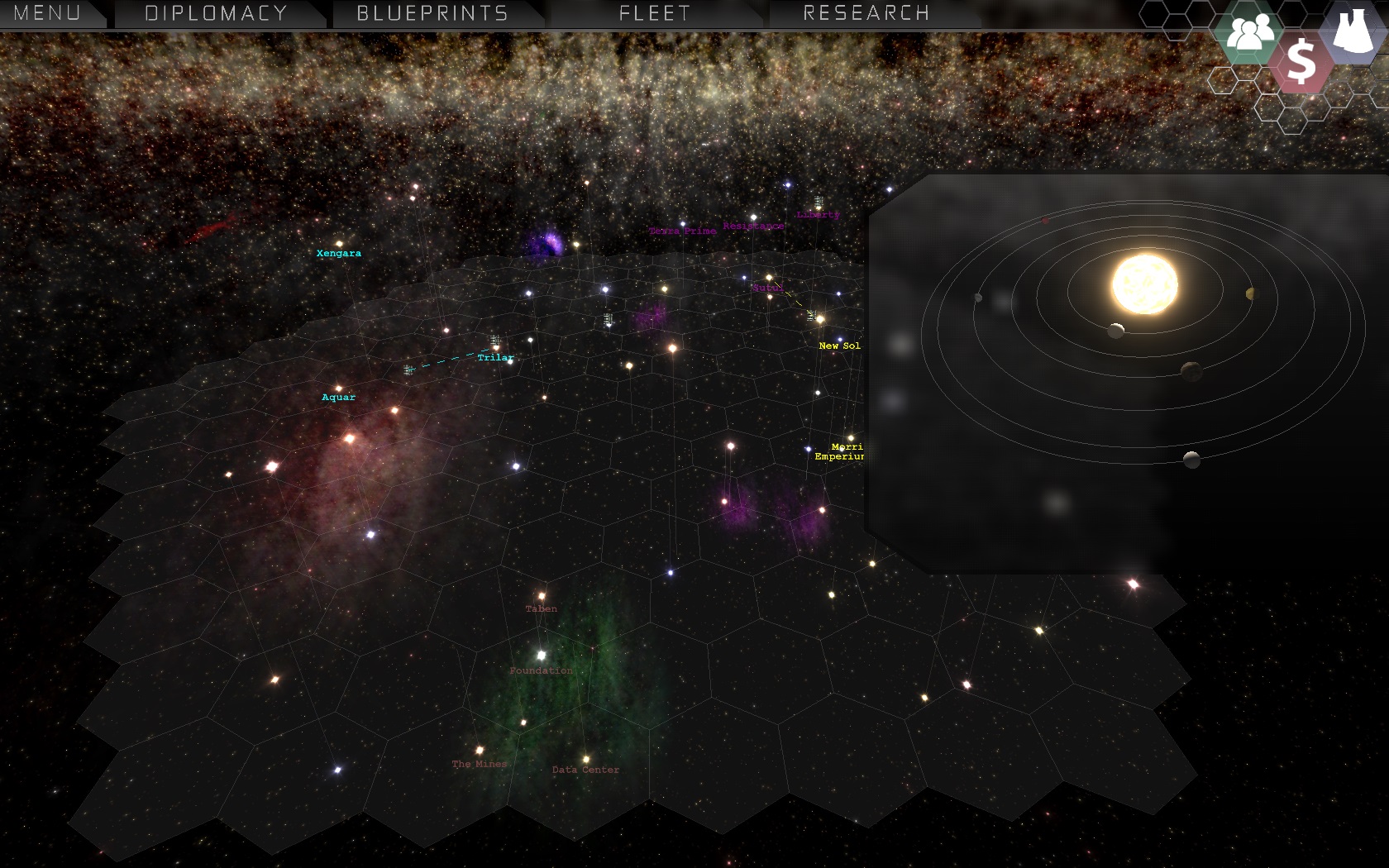
Predestination: Development and Release
After they broke their $25,000 Kickstarter barrier by a factor of two last December, buoying confidence and enabling stretch goals, Nerd and Brain continued to build on the work already showcased in the pitch. Moving forward with a community of eager backers hungry for a new 4X fix, project manager Tina Lauro tells us how things are progressing.
How far along is Predestination's development?
Tina: We’re coming along nicely so far! The game engine has had an extensive overhaul, which entailed us incorporating missile, fleet battles, and terraforming mechanics into it. We knocked out our UI framework this month, which has been received pretty well. All of our core races are designed at this point, and we’re making steady progress on the 3D modelling front too.
You've taken the crowd-sourcing Kickstarter ethos a step further and have been involving the growing Predestination community in the development process. How has that been working out?
Tina: Backer feedback has been absolutely invaluable to us. We get intelligent, in-depth feedback every time we approach our community, and it really helps us iron out the details, and ensure that we’re right in our ideas and assumptions. We don’t want people to be disappointed after all of our hard work, and we’re not arrogant enough to presume that we hold all the answers to making an amazing game with our first title, but seeking out this feedback and accepting the direction and involvement of our supporters helps us to ensure a quality product at launch.
We will soon be able to work with our race and level designers, and we just cannot wait to see how those interactions will reshape the universe we’ve created! We already got in touch with our commander creators, and the vast array of colourful characters they came up with has blown us away!
Your website mentions a December 2013 release target and a “feature complete beta” in August 2013. Is this still the case?
Tina: It’s really very hard for an indie company to accurately predict launch dates – particularly with a one-man programming team – and so we can never guarantee a release date. If we end up falling behind, there’s not much we can do in terms of crunch-time with just one programmer, we may run into hold-ups we didn’t envision, and there is immense pressure on indie devs to produce a high-quality, bug-free end result. We won’t release until we are sure we have done all we can to make the game we promised.
What I can say is that we’re still on target for an end of Q4 2013 or beginning of Q1 2014 release, but we won’t call it done unless it really is done!
What are your plans for post-release development?
Tina: We really want to work with a 3D ship designer shortly after release, and we also have great plans to introduce organic ships and weaponry. The scope for new mechanics evolving from these extras is pretty great! We plan on making DLC packs that contain new weaponry, commanders, buildings and races, and we also want to release expansions that enhance the Predestination story through more episodic story missions and challenges.
Do you have any plans beyond Predestination? In a games industry sense rather than a metaphysical one.
Tina: We do! Our immediate plans are to make sure our “free DLC for life” backers get their money’s worth out of us, though! We really want to perfect the genre and we won’t be rushing into our next project. After we have created the expansions and DLC we have planned, though, who knows? We have enormous scope already with our game engine, and we’d really love to have the budget to create a sandbox style space game.
NEXT: Predestination: Building the Brain and Nerd Brand
Predestination Exclusive Series Contents
- An Exclusive Interview with the Brains and Nerds Behind Indie 4X Game Predestination
- Introducing Predestination
- Predestination: Concepts and Influences
- Predestination: Paths to Victory
- Predestination: Combat Gameplay
- Predestination: Development and Release
- Predestination: Building the Brain and Nerd Brand
- Predestination Creator Brendan Drain on Developing His First Game
- Closing Thoughts and Useful Links

Predestination: Building the Brain and Nerd Brand
The Brain and Nerd team seem to be wearing their hearts (Ed: wrong organ) on their sleeves with their studio name, but what is behind this unconventional gang of folk from the northern end of the Emerald Isle. Project Manager Tina Lauro walks us through it.
Brain and Nerd is the name of your studio, where did that come from?
Tina: It is actually an anagram of Brendan Drain! How cool is that?! The minute that clicked for him, it just had to be the company name. We both adore words, and the name just absolutely felt right the moment it was thought of. It’s awesome to be asked about the roots of the name, just to tell that anecdote!
How did Brain and Nerd come into existence? You've grown from a one-man band into a team now, right?
Tina: Well, I don’t know if you’d be able to call Brain and Nerd a one-man band. Sure, the engine was all created by Brendan, but the idea for the game and the actual “this can lead somewhere” moment only happened after Steven Pollock, our Art Director, and I saw the engine’s bare bones and believed in the possibilities Brendan had the ability to create. Brendan had toyed with the idea of creating a game in the past, but hadn’t seen it through on his own before. Having similarly-minded housemates right under his roof was a very convenient way for him to collaborate and get the support and motivation he needed to make his ideas a reality!
This has been very much a joint venture for the team, particularly for Brendan and me since we’re business partners, and without any one of us things would quickly unravel. We’re very lucky to have each other. Brendan is a genius, and I am a compulsive motivator and organiser, so it just kind of… works. Without the pushing and nudging of each other, no one of us would have ever had the motivation to take a project of this scale forward, least of all at the tail-end of a double-dip recession in a country without a developed gaming industry.
Names. I Googled “Predestination” and it turns out its got something to do with God and the Protestant Reformation. Since that's all a bit of a hot potato (sorry) in your part of the world, should we just skip this question and move on?
Tina: Ahaha, I think we can safely say that we’ve not had anyone here pick up on the religious connotations of our name and call us out for it, so we’re not in murky water for now! Northern Ireland is a more positive, less contentious place these days, which I’m very proud to be able to say.
We picked the name because of the base storyline for the game: the playable races used advanced technology against their destructive enemy, but were inadvertently pitched back through time. They hope to change the course of events, maybe by destroying the sleeping enemy before they come to harm. Some of the more philosophical races feel like this is their fate, and with the whole time jump thing we decided that the idea of predestination might come to play.
How's the competition in Northern Ireland? Is anyone else making games over there or have you got undisputed claim on being Belfast's answer to Sid Meier?
Tina: Northern Ireland’s gaming industry is in much the same state as it was when we launched on Kickstarter. We have some stellar independent companies, but we still haven’t encountered anyone who is taking on the hardcore gaming market. It’s unfortunate, since we have some great universities here offering fantastic games design courses, but we don’t have the jobs for the graduates to apply for when they finish studying. Hopefully we’ll change that in the future!
NEXT: Predestination Creator Brendan Drain on Developing His First Game
Predestination Exclusive Series Contents
- An Exclusive Interview with the Brains and Nerds Behind Indie 4X Game Predestination
- Introducing Predestination
- Predestination: Concepts and Influences
- Predestination: Paths to Victory
- Predestination: Combat Gameplay
- Predestination: Development and Release
- Predestination: Building the Brain and Nerd Brand
- Predestination Creator Brendan Drain on Developing His First Game
- Closing Thoughts and Useful Links
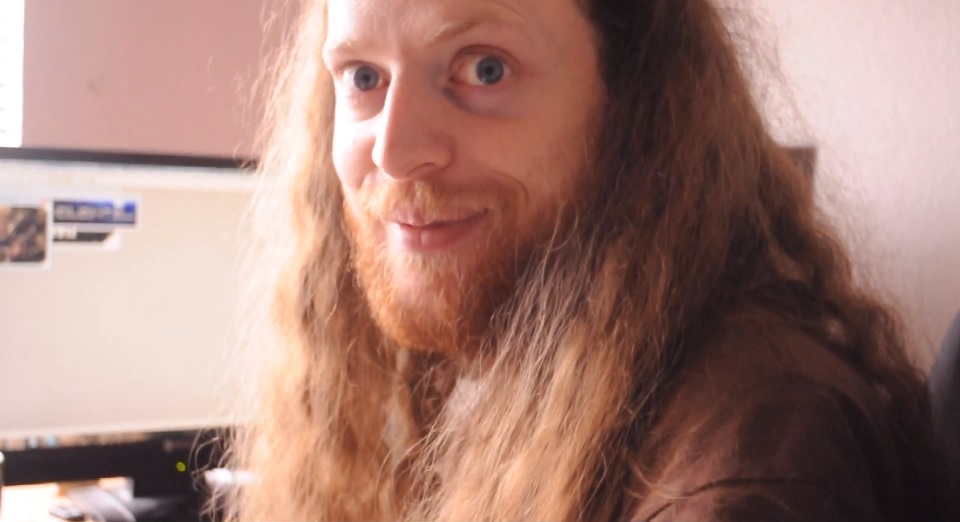
Predestination Creator Brendan Drain on Developing His First Game
Perhaps more known- at least in gaming circles - as Massively's EVE Online correspondent, it seems Brendan Drain may always have been on his own inevitable path to games creation.
Brendan, how did you make the transition from journalist to developer?
Brendan: I never really made a transition from journalist to game developer. I've been modding games and designing game prototypes since the old Amiga days in the nineties and I always knew it was what I wanted to do with my life. I studied Computer Science to help learn the programming skills I needed, and it was during uni that I kind of accidentally fell into games journalism.
So technically speaking, Predestination isn’t your first game? What kind of things did you prototype in days of yore?
Brendan: Oh man, the first game I ever made was a little shoot em up called Scrunch 'o' Blaster on the Amiga 600; I wish I still had a copy of that somewhere. I almost finished building an online 2D competitive dungeon game in C# during university but never released it, and after graduation I toyed about with making procedural terrain engines and galaxy renderers for a while. Predestination actually started life as a sci-fi sandbox set in a procedurally generated galaxy of a few hundred million stars, where the player could jump between stars in range. A sandbox game was a bit too large in scope to handle without a large budget and I'd always wanted to develop a 4X game, so the project eventually became Predestination.
Do you view your journalism role as a stepping stone toward realising your game development ambitions?
Originally, I was just a massive EVE Online forum nerd fiddling with spreadsheets, working out formulas and figuring out how the game worked under the hood. That eventually led me to write a few guides for EON magazine, and editor Richie Shoemaker then gave me a shot as assistant editor. Having that portfolio helped me get my current position at Massively, where I've written the weekly EVE Evolved column and other features on game design for over five years.
Though game development is now my main focus, I still find the time to write about EVE Online and keep up with the games industry from a journalist's perspective. It's been really interesting to see the journalist-developer relationship from both sides, and it's definitely made me more willing to give independent developers a break.
Are we seeing a revival in the “bedroom coder” indie development culture that preceded today’s multi-billion-dollar corporate-led industry? Or is a good business head and a marketing department still a requirement even at the indie level?
Brendan: We've definitely seen a huge indie revival in the past few years. Some of today's most popular games were indie titles that came out of nowhere, and services like Kickstarter are making hundreds of new projects possible every year. But keep in mind that we really only hear about the successful cases, and not the hundreds of indie studios and individual developers who aren't making it. The indie market is getting crowded, and your game has to stand out and get noticed to have a chance.
Many GameSkinny readers harbour aspirations to design games. What advice could you offer them? What pitfalls and challenges lay in wait?
Brendan: The biggest pitfall I see people fall into is wasting time writing up these huge design documents. I used to do this all the time because it feels like you're making a lot of progress, but they're just ideas in your head until someone starts programming. Most of the work in game development is programming, and you never know if an idea will be fun or even feasible until you start coding it. My advice is to just get stuck in and start developing your game, and redesign anything that doesn't work or isn't fun as you come to it. If you don't have the skills to start the coding on your own, either study it or find a programmer to work with.
The best piece of practical advice I've ever received is to keep a development blog. Every time you finish a development session on your game, write up a short summary of what you've done (ideally with screenshots) and a few bullet points on what you plan to do next. This will stop you from losing your place if you ever have to drop the project for a while. It seems like such a simple idea, but it's helped me keep track of projects even with breaks of six months or more in the middle. It's also a great motivator and self-esteem booster to know that some people are reading about your game.
Whenever you've been working on a project for a while and it's getting too complicated or the code gets messy, you might also have the urge to scrap it and start over. The problem is that this cycle never ends; if you do restart it, you might do a better job of it the second time around but you'll eventually hit the same wall. Instead of starting over, my advice is to spend the time to slowly clean up the project and test the game after every change to be sure you haven't broken anything. It's a slog and doesn't always feel like progress, but it's worth it in the long run.
NEXT: Closing Thoughts and Useful Links
Predestination Exclusive Series Contents
- An Exclusive Interview with the Brains and Nerds Behind Indie 4X Game Predestination
- Introducing Predestination
- Predestination: Concepts and Influences
- Predestination: Paths to Victory
- Predestination: Combat Gameplay
- Predestination: Development and Release
- Predestination: Building the Brain and Nerd Brand
- Predestination Creator Brendan Drain on Developing His First Game
- Closing Thoughts and Useful Links
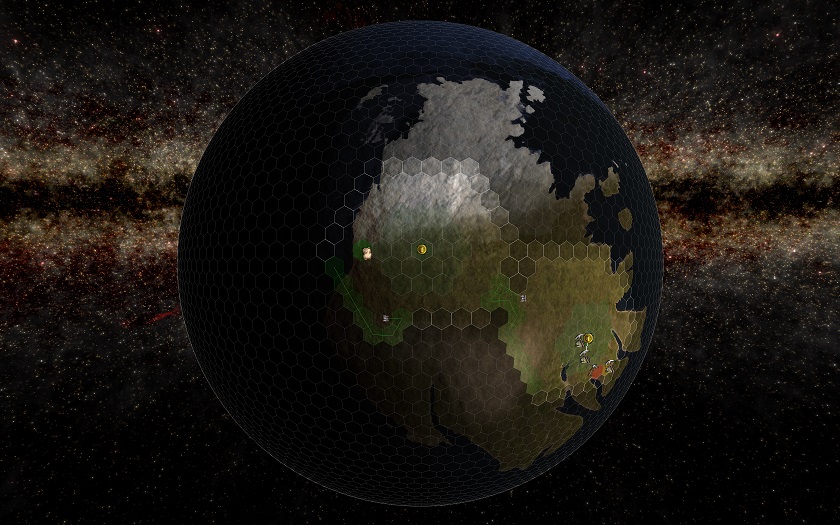
Closing Thoughts and Useful Links
As a fan of science fiction and broad open-world games, I find Predestination an exciting prospect and the crowd-sourced nature of its development makes watching its growth and development a fascinatingly transparent process and perhaps - without a hint of irony - a glimpse of the future direction of game development.
It is a positive and encouraging sign that the video game community can so passionately support and embrace start-up projects with fresh ideas. It bodes well for the health of the industry that customers can be discerning enough to back such ventures whilst simultaneously showing their wrath toward openly greedy corporate policies as exhibited recently by EA Games and Microsoft. The everyman is finding a voice.
An active community of contributors has gathered around the Predestination concept and the success of the Kickstarter campaign speaks volumes about how much faith they have in Brain and Nerd's ability to deliver the gaming experience they want.
I wish Brendan, Tina, and the rest of their team all the best in their pioneering efforts and will be doing my best to take part in the growing Predestination community. If what you've read here has piqued your interest, I'll wrap up with a list of useful and relevant links.
Go check them out. After all, Predestination is inevitable.
- Predestination game website
- Predestination Kickstarter page
- Brain and Nerd's YouTube page
- Predestination forum community
- Brendan's Massively column
Predestination Exclusive Series Contents
- An Exclusive Interview with the Brains and Nerds Behind Indie 4X Game Predestination
- Introducing Predestination
- Predestination: Concepts and Influences
- Predestination: Paths to Victory
- Predestination: Combat Gameplay
- Predestination: Development and Release
- Predestination: Building the Brain and Nerd Brand
- Predestination Creator Brendan Drain on Developing His First Game
- Closing Thoughts and Useful Links





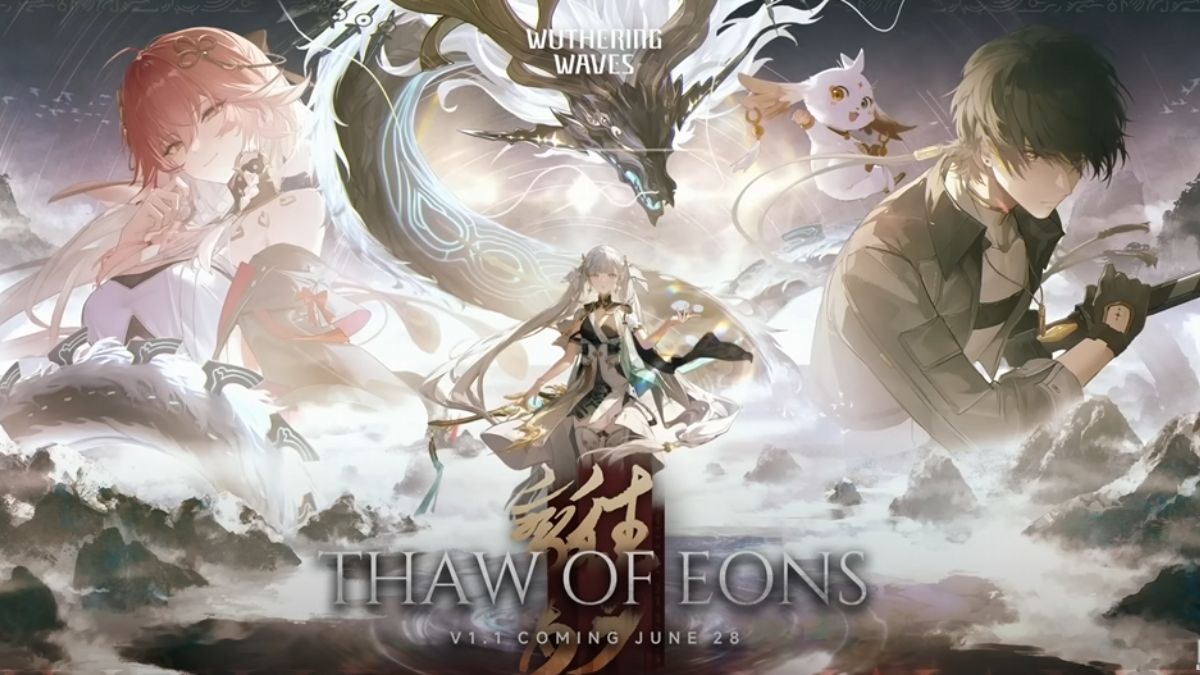

Published: Jun 21, 2013 07:24 am